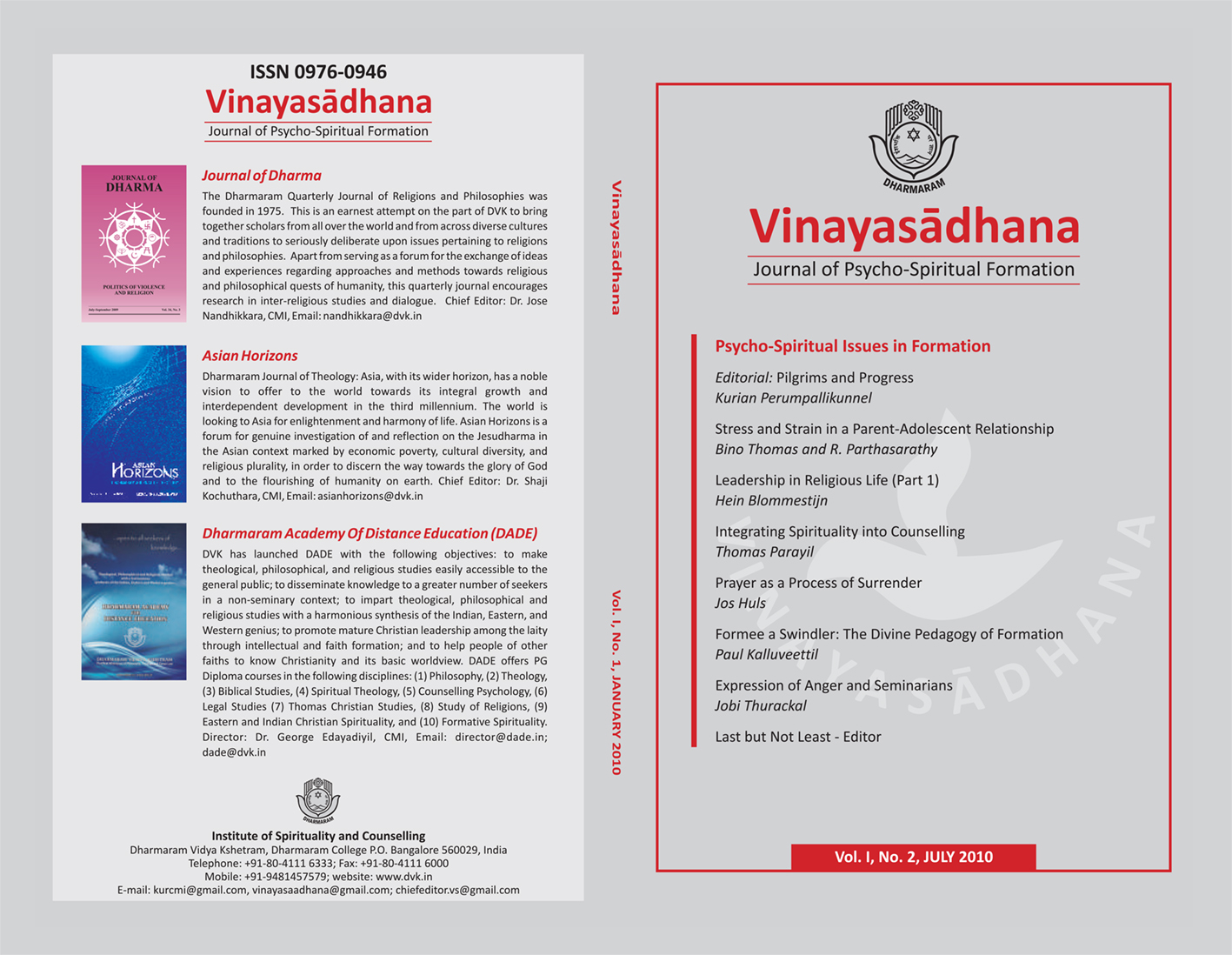Expression of Anger and the Religious Seminarians
Keywords:
Anger, Physiological arousal, Desire for revenge, FrustrationAbstract
Anger is a universal emotion. It has been associated with various factors like physiological arousal, unpleasant feelings, appraisals of insult, desire for revenge, frustration, and aggressive behaviour. Cultures vary in the norms regarding the expression of anger and beliefs about the normalcy of anger among the different age groups of the population. Christianity looks at the emotion of anger negatively when it is expressed for personal purpose, whereas when it is put across for common justice it is compromised. This article describes the nature of the emotion of anger and its expression with the help of a study done on the religious male adults who were doing their philosophical and theological studies in seminaries.
References
Campos, J.J., Campos, R.G., & Barrett, K.C. (1989). Emergent themes in the study of emotional development and emotion regulation. Developmental Psychology, 25, 394-402.
Camras, L.A. (1992). Expressive development and basic emotions. Cognition and Emotion, 6, 269-283.
Eckhardt, C. J., & Deffenbacher, J. L. (1995). Diagnoses of anger disorders. In H. Kassinove (Ed.), Anger disorders: Definition, diagnosis, and treatment (27-47). Washington, DC: Taylor & Francis.
Fine, M. A., & Olson, K. A. (1997). Anger and hurt in response to provocation: Relationship to psychological adjustment. Journal of Social Behavior and Personality, 12, 325-344.
Fridja, N.H. (1986). The emotions. Cambridge: Cambridge University Press.
Fridja, N.H. (1999). Emotions and hedonic experience. In D. Kahneman, E. Diener, & N. Schwarz (Eds.) Well-being: The foundations of hedonic psychology (190-210). New York: Russell Sage.
Halle, T.G. (2003). Emotional development and well-being. In M.H. Borstein, L. Davidson, C.L.M. Keyes, & K.A. Moore (Eds.) Well-being: Positive development across the life course (pp.125-138). London: Lawrence Erlbaum Associates, Publishers.
Kopper, B. A., & Epperson, D. L. (1991). Women and anger: Sex and sex-role comparisons in the expression of anger. Psychology of Women Quarterly, 15, 7-14.
Krausz, M., Kedem, P., Tal, Z., & Amir, Y. (1992). Sex-role orientation and work adaptation of male nurses. Research in Nursing and Health, 15, 391-398.
Lang, P.J. (1995). Then emotion people. American Psychologist, 50, 372-385.
Ortony, A., & Turner, T. J. (1990). What’s basic about basic emotions? Psychological Review, 97, 315-331.
P. Keita & J. J. Hurrell, Jr. (Eds.), Job stress in a changing workforce (39-54). Washington, DC: American Psychological Association.
Payne, K. E., & Cangemi, J. (1997). Gender differences in leadership. IFE Psychologia, 5, 22-43.
Piltch, C. A., Walsh, D. C., Mangione, T. W., & Jennings, S. E. (1994). Gender, work, and mental distress in an industrial labor force: An expansion of Karasek’s job strain model. In G. Potegal, M., & Stemmler, G. (2007). Cross-disciplinary views of anger: Consensus and controversy. In Michael Potegal, Gerhard Stemmler, & Charles Spielberger (Eds.) International Handbook of Anger (3 -7). New York: Springer.
Schachter, S., & Singer, J. (1962). Cognitive, social and physiological determinants of emotional state. Psychological Review, 63, 379-399.
Strickland, B.R. (2001). The gale encyclopedia of psychology. 2nd ed. Famington Hills, MI: Gale Group.
Thompson, R. A. (1993). Socioemotional development: Enduring issues and new challenges. Developmental Review, 13, 372-402.
Timmers, M., Fischer, A. H., & Manstead, A. S. R. (1998). Gender differences in motives for regulating emotions. Personality and Social Psychology Bulletin, 24, 974-985.
Zajonc, R. B. (1980). Thinking and feeling: Preferences need no inferences. American Psychologist, 35, 151-175.


